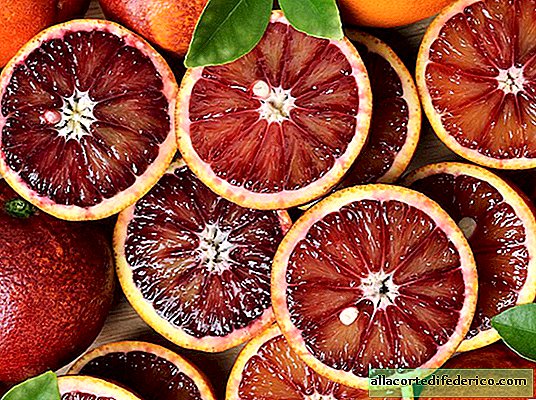Bloody oranges: why they are healthier than usual
We are used to buying oranges in stores, which have an orange peel and orange flesh, as well as orange juice with a characteristic yellow-orange color. That is what most varieties that are grown on an industrial scale and transported to consumers around the world look like. But in the world there are completely unusual oranges, the flesh of which has a red-burgundy color.

Today, there are many varieties of oranges that are grown in the tropics around the world. The birthplace of this plant, as well as many citrus fruits, are the moist tropical forests of Asia, and oranges were grown in China 4,500 years ago.

Oranges are superior in popularity to all other citrus fruits, including lemons and tangerines. They are grown in Brazil, China, Mexico, India and even in the United States oranges are the most important crop in the states of Florida and California. Despite the fact that today about 400 varieties of oranges are bred, only 20-30 varieties are grown on an industrial scale, and the most common is Washington Navel.
 Industrial varieties of light oranges
Industrial varieties of light orangesVarieties of oranges are usually divided into two groups: korolkovye (bloody or red) and light oranges, which in turn are divided into umbilical and ordinary.
 Bloody Orange, Moro
Bloody Orange, MoroBloody oranges are thought to have arisen as a result of a mutation of traditional varieties of oranges. They differ in the rich red color of the pulp, which is due to the presence of the anthocyanin pigment. Scientists believe that anthocyanins related to antioxidants have a beneficial effect on the state of the body, preventing some aging processes and the development of age-related diseases. In addition, bloody oranges, as well as varieties with a traditional color, contain many useful trace elements and vitamins, including iron, calcium, vitamins A and C.
 Anthocyanins give dark color to fruits.
Anthocyanins give dark color to fruits.Among the bloody oranges, several varieties are also known, which differ from each other in the color of the fruits, the color of the peel and size. But in general, the size of the fruit of bloody oranges is slightly less than that of the varieties of umbilical oranges sold worldwide. Despite the obvious benefits of bloody oranges, they are not as widespread as regular varieties. Their peel fits snugly on the pulp, and it is very difficult to peel, so they are mainly used for making juices and soft drinks.
 Blood orange juice also has a red tint
Blood orange juice also has a red tint

















